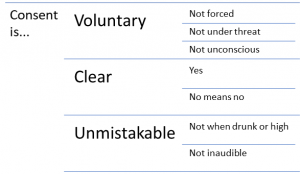[Trigger Warning: This explainer contains information on physical violence, sexual violence, abuse and slurs which some readers may find disturbing.]
Sexual harassment can happen in several ways. Actions such as following a person on the streets or in any public space, peeping into their bedroom, making sexual gestures at them while they are at work or in the classroom, singing lewd songs – all of this is sexual harassment. Under the law, only a man can be punished for the crime.(( Section 354A and 354, Indian Penal Code, 1860.))
There are many ways to reach out to an authority that will help, and anyone can file a complaint on a survivor’s behalf. A survivor can file a complaint of sexual harassment, irrespective of the place where it has happened. An FIR can be filed at any police station. The fact that the crime may not have been committed in that police station’s jurisdiction has no consequence to the filing of the complaint. It is mandatory for the police to record the information provided, and then transfer it to the police station in whose area/jurisdiction the offence took place. For instance, if a crime was committed in North Delhi, the information can even be registered with a police station in South Delhi.
The law deals with four categories of sexual harassment(( Section 354A, Indian Penal Code, 1860.)):
- Physical contact and advances involving unwelcome and explicit sexual overtures (Inappropriate sexual touch)
- A demand or request for sexual favours
- Making sexual remarks and threats
- Showing pornography
The punishment for inappropriately touching, demanding or requesting sexual favours and making sexual coloured remarks is jail time up to three years with a fine. For showing pornography, the jail time is up to one year along with a fine.1
Recourse against the Perpetrator
A survivor can go to the police and file an FIR after which the police will investigate and file charges before the court. The court will then decide whether the person is guilty or not. If the person is found to be guilty, they will be fined and punished with jail time depending on the kind of crime committed.
To explore more on complaining against the perpetrator, you can read our explainer on ‘How do you complain against sexual crimes’.
When a child has been harassed
If a child (below the age of 18) has been sexually harassed by anyone, including someone they know, relatives, friends, etc., anyone including the parents or teachers can report the crime on behalf of the child. It is illegal to not report the crime and a person can face criminal consequences for knowing about the crime and not reporting it.(( Juvenile Justice Act (Care and Protection of Children), 2015; The Protection of Children from Sexual Offences (POCSO) Act, 2012.)) To explore more on sexual abuse against children, you can read our explainer on Sexual Abuse of Children.
- Section 354A (2) and (3), Indian Penal Code, 1860. [↩]
